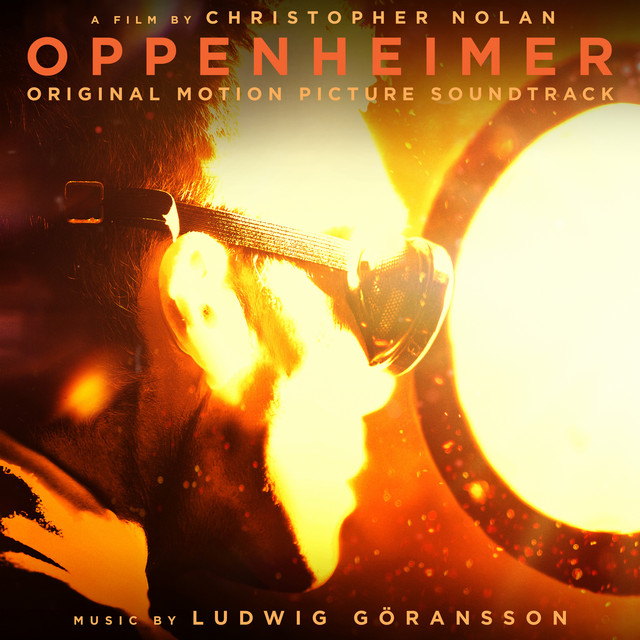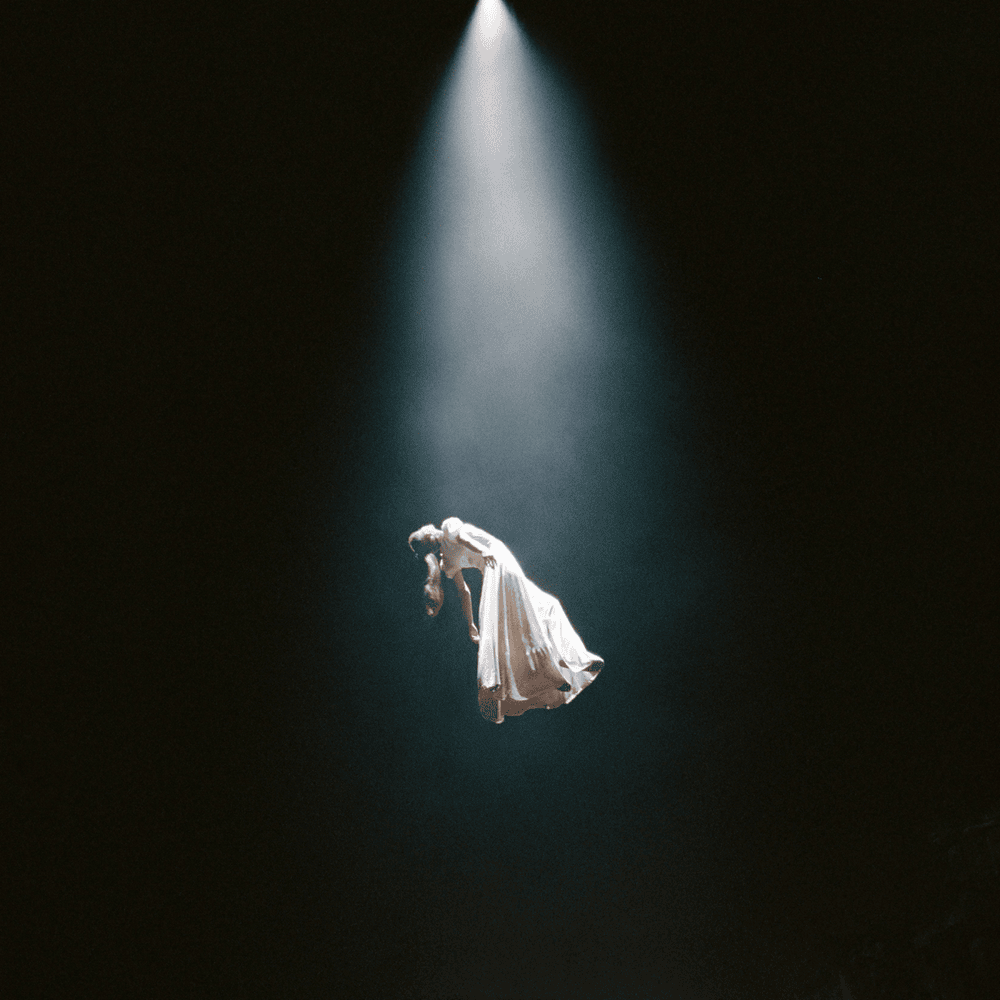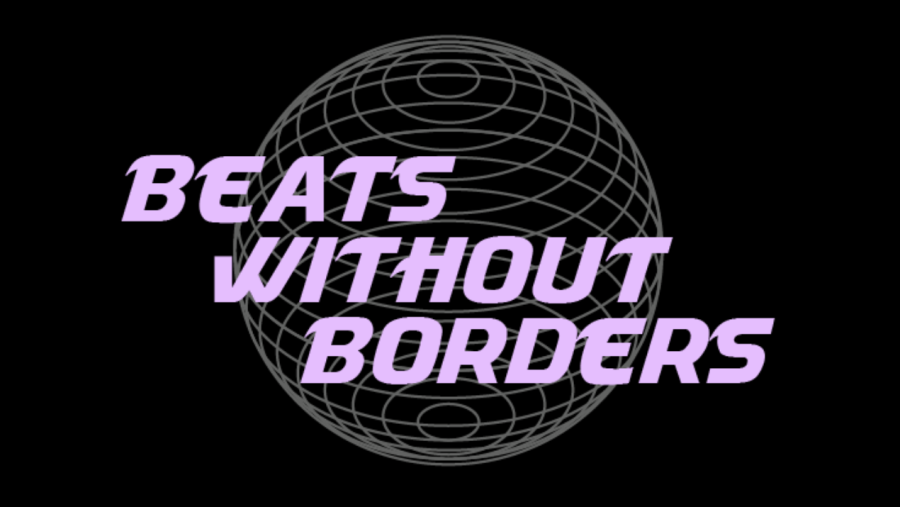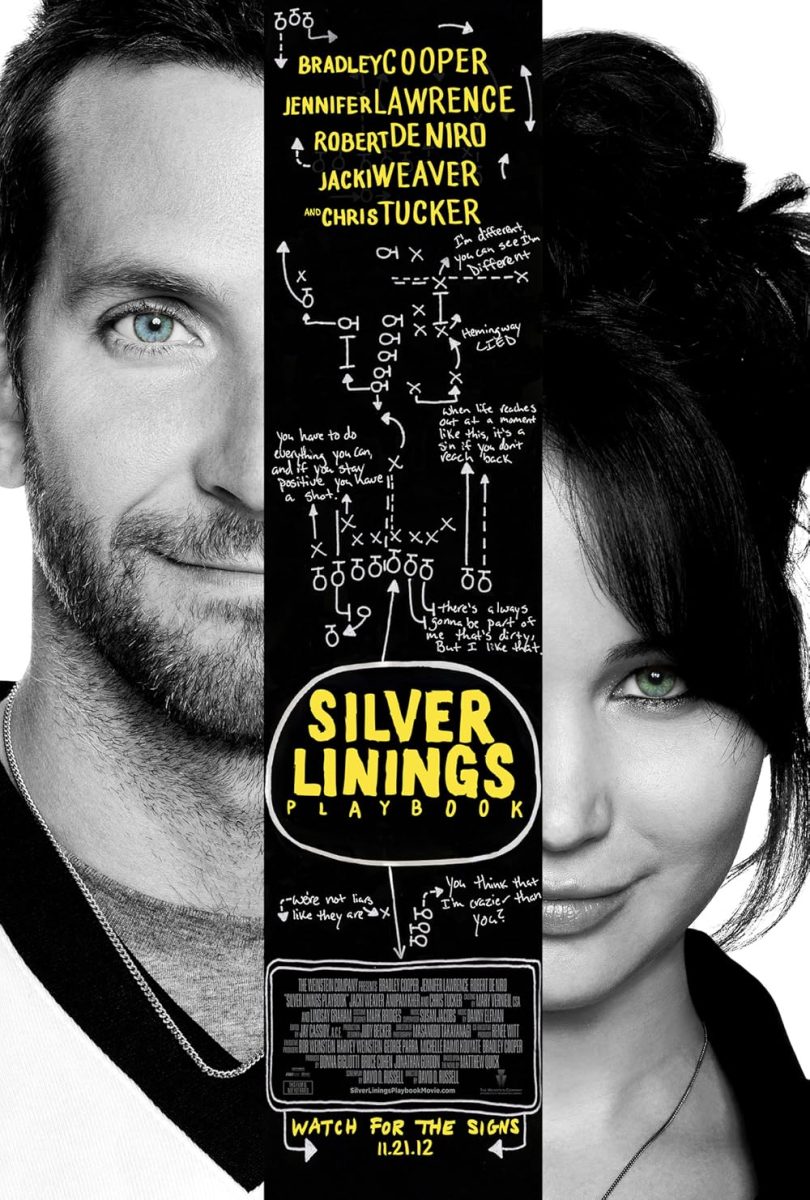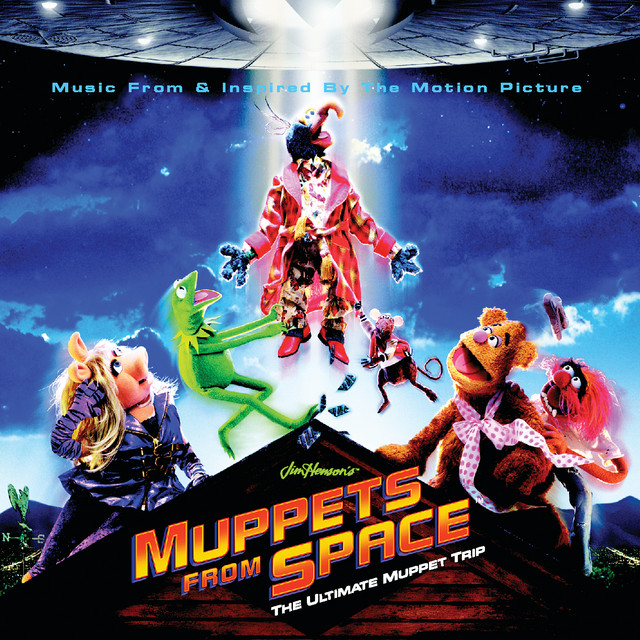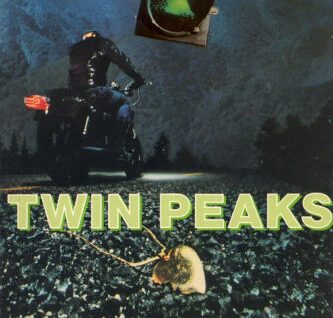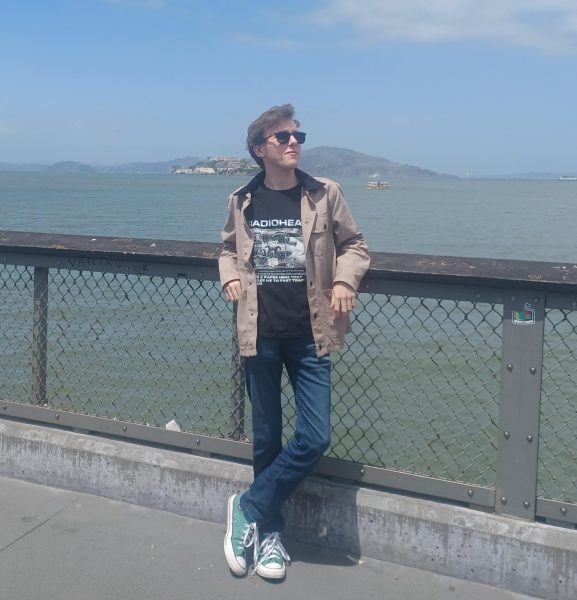A British university student stares longingly into a puddle, ripples of water scattered from the pouring rain. Something appears to be troubling him. Before we can ask what’s wrong, monstrous displays of fire and flames ignite the screen, waves of energy beyond our recognizable world. Faint strings build in anticipation, the loud drumming of feet warning of what is to come. As the dust dissipates, text appears: “Prometheus stole fire from the gods and gave it to man. For this he was chained to a rock and tortured for eternity.”
No film has left quite the impact as the explosive, three-hour long biopic from Christopher Nolan, Oppenheimer, that released July 21, 2023. With the star power of the A-list casting and the beloved director paired with the marketing for the dual screening film, Barbie, to release at the same time, the film left its mark — it ended in the top three grossing films of the year. Following physicist J. Robert Oppenheimer’s life, we learn of the historical struggle against communism, or the Red Scare, the daunting task of the Manhattan Project and the moral dilemmas of warfare and sacrifice. Throughout the film, Oppenheimer is troubled with visions of a barren world and the consequences of his actions. For not one second does anxiety leave your body while watching the film. Every scene is brittled with tense, resentful glares and deceptive dialogue, a harsh reality of the evil that lies in humanity and the individual lack of awareness of the bigger picture.
The film captivates attention for a story about the history of some terrible decisions from some terrible people. To do this, it utilizes all sorts of techniques — beautiful cinematography, jaw dropping performances and thoughtful writing. To me, though, what really carries the weight of this film on its back as heavy as Oppenheimer’s guilty consciousness is the hypnotizing score composed by Ludwig Göransson. Nolan requested for the score to be predominantly violin, calling it a “fretless instrument.” As evident in the sound of the film, the violin can entrance the viewer with a romantic melody and switch to an unsettling scream of pain in just a few short seconds. It allows freedom and a grand atmosphere of inspiration, demonstrating the determination of Oppenheimer and all of his peers. With one wrong step, the violin can sink into a dreadful vibrato — the frustration and turmoil of a decision that changes life as we know it brews inside Oppenheimer.
After the films opening words, surrounded by intense and atmospheric ignitions of strings, soft taps of what almost sounds like a harp ring. The fearful and confused look of Oppenheimer gets further from the screen as the camera zooms out, a pool of thoughts swimming in his deep blue eyes. The title for Oppenheimer’s story appears on screen, “Fission,” which is the same title as the track. Oppenheimer’s concerned look and nerve-stricken voice are contrasted with the confidence in Lewis Strauss’s voice, founding member of the U.S Atomic Energy Commission. Strauss is filmed in monochrome color, with a title card “Fusion” — Strauss’s, or the outside world’s, perspective on the events that unfold. This song is the perfect opening track to the film. A current of looming fear fills the sound, a string tense and ready to break at any moment. It’s tender and open, leaving room for notes to resonate, but methodic and tight. Oppenheimer is crammed in a tiny little office space at the start of a private security hearing, beginning to read a letter to address the board members. With the strings that come in periodically, the plucking of the harp like a pulse, Oppenheimer is put on a stage and into the light — helplessly vulnerable. The strings descend into madness as Oppenheimer recalls the visions he was troubled with in his time at school, powerfully paralleling the depth of emotions felt in his younger memories filled with pain, frustration and ambition.
Oppenheimer encounters grand advice to kickstart him on his scientific journey during his time at university. Physicist Niels Bohr at Cambridge questions, “Can you hear the music, Robert?” Making his way to Germany to study at the University of Göttingen, Oppenheimer becomes madly obsessed with quantum physics. “Can You Hear The Music” is a perfect track to encapsulate an obsession that emerges from passion. Less than two minutes long, the track is a massive arrangement of strings and keys, made up of 21 tempo changes. Göransson originally deemed the song impossible to play without composing it bar to bar but took to the challenge and recorded the piece as one take. Oppenheimer is visualized as an academic weapon, completely immersing himself in the world and its arts, gathering and processing knowledge like its food. He smashes glasses against a wall, taking the advice he’s been given almost too far. He wants to have a deeper understanding of the world he lives in; he wants to understand the things we can’t see. The rapid speeding up of strings from an ascending melody to a descending barrage of sound elevates this image of Oppenheimer’s obsession.
We watch Oppenheimer and his first encounter meeting Strauss as “A Lowly Shoe Salesman” plays. It’s a deceptively kind breeze, hints of anger building in the swelling of violins. We watch as Oppenheimer seemingly upsets Albert Einstein, their conversation muffled from our ears. Venturing past his education and working as a professor and researcher, Oppenheimer is soundtracked by “Quantum Mechanics” and “Gravity Swallows Light.” The rumbling of thunder and the same musical motif of a swelling of horns and violins soundtracks Oppenheimer’s naivety, bouncing between the world of science and politics. The song that emotionally resonates with me during Oppenheimer’s early days is “Meeting Kitty.” Oppenheimer continues reading his letter to the security board, mentioning his wife, Kitty, and her former ties to the communist party. As Oppenheimer falls deeper into the creation of the atomic bomb, evidently losing his grasp on morality and empathy, Kitty levels him out. Their relationship was far from perfect, and the two are by no means role models. As Oppenheimer says himself in the film, “We’re awful people. Selfish, awful people.” Far from perfect, they understood each other at a certain level — reasoning over bitterness and understanding over resentfulness. Beginning not with violin but piano, there is strength in the solidarity of chords that play. The violins swim with the arpeggio of keys, united as the two join together on their journey in life.
Moving forward, Oppenheimer finds himself as head of the Manhattan Project, a program dedicated to researching and forming the first atomic weapons. “Manhattan Project,” “Los Alamos” and “Colonel Pash” fill the soundstage full of excitement, determination and anxiety. The race to create nuclear weapons set against the battle against communism finds Oppenheimer at the center of it all. After months and months of research and design, the atomic bomb is ready. From his exploration of the arts and poetry — he was reading T.S Eliot’s “The Waste Land” earlier in the film —, Oppenheimer names the test inspired from a holy sonnet by John Donne. “Trinity” is a current of violent strings, spiking in anticipation and anxiety for nearly eight minutes while Oppenheimer and his crew begin the countdown for testing the bomb. As the detonation is near seconds away, layers of violins spiral into madness and dread becomes fear of what is to come. There is a chance the bomb may not work, and worse, there is a chance the bomb works too well — a chain effect of atoms upon atoms rupturing the entirety of the atmosphere. As the wall of noise reaches a climax, all sound stops. The bomb ignites flames into the sky, soft keys setting in as Oppenheimer and his crew watch. The tension releases, the strings no longer violent but soft and lull. A full range of emotions are put on display with this track, powerfully conveyed through minimal instruments.
Following the triumphant accomplishment comes a feeling of uncertainty. Short bursts and hums of violin pepper “What We Have Done.” Oppenheimer recognizes it’s a short lived victory, watching as his creation is packaged up and shipped off, no longer in his control. His life’s work is complete, and Oppenheimer seems conflicted over its use. Undoubtedly one of the greatest scenes in the film, Oppenheimer gives a speech in a small auditorium of sorts, soundtracked by this song. As the crowd cheers along to the words he shares, silence fills the room as a blood-curdling screech ruptures. Oppenheimer looks around, light blinding his eyes as he envisions the destruction in Hiroshima. Leaving the scene, a cacophony of shrieks surrounds the space; the consequences of his creation are catching up to him.
The film follows political and legal discourse in the aftermath of the two bombings. Musical motifs come full circle with “Kitty Comes To Testify” and “Something More Important.” Coming to a close, the last track rounds the experience together with great accomplishments and detrimental reactions. “Destroyer of Worlds” first builds with the same melody as the opening track, reflecting on the events that unfolded. We come back to Oppenheimer’s conversation with Einstein, a close up shot on the sorrow in Oppenheimer’s wrinkled face. The leading musical motif of violins swelling like a wave ruptures the calming melody. The world Oppenheimer feared would be destroyed by the bomb managed to survive, yet Oppenheimer isn’t so sure. Setting forth the destruction created by the bomb he built unleashes levels of malice never seen before. War will never be the same, and life will never be as safe again. A dissonant ringing increases in volume, flashes of jets breaking through clouds and images of the same ripples of water seen in the opening shot of the film. It’s overwhelming — the strings are ready to snap at any second. Oppenheimer can’t seem to bear the weight of his actions, so he shuts his eyes tight. Oppenheimer’s final words paired with the hypnotizing soundtrack creates a tragic message: Humanity might already be doomed to fail, and it’s our own fault.



